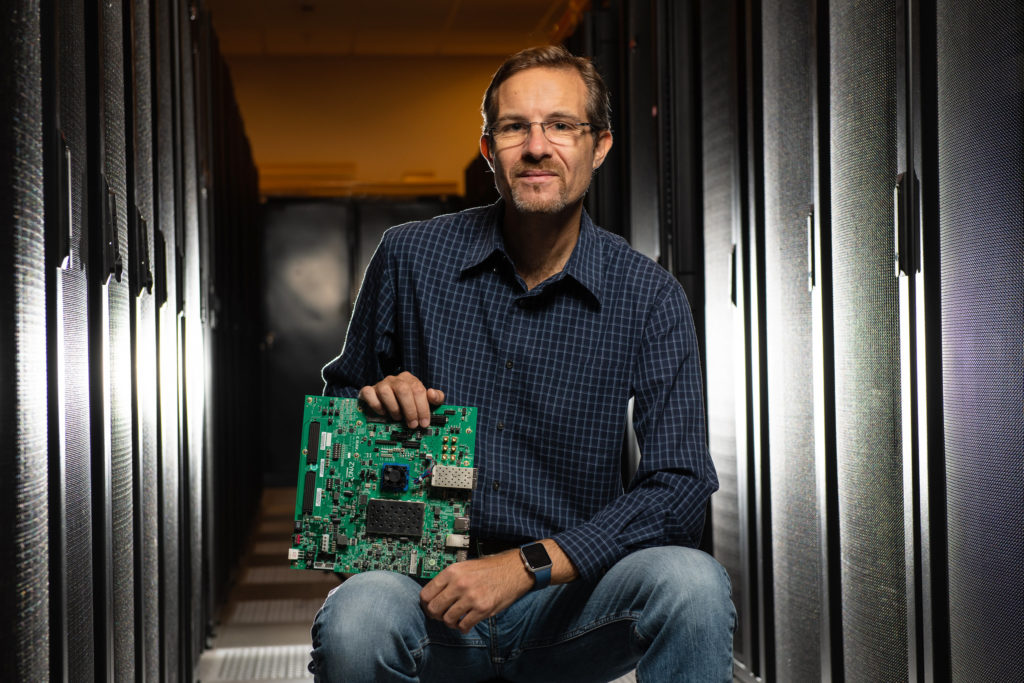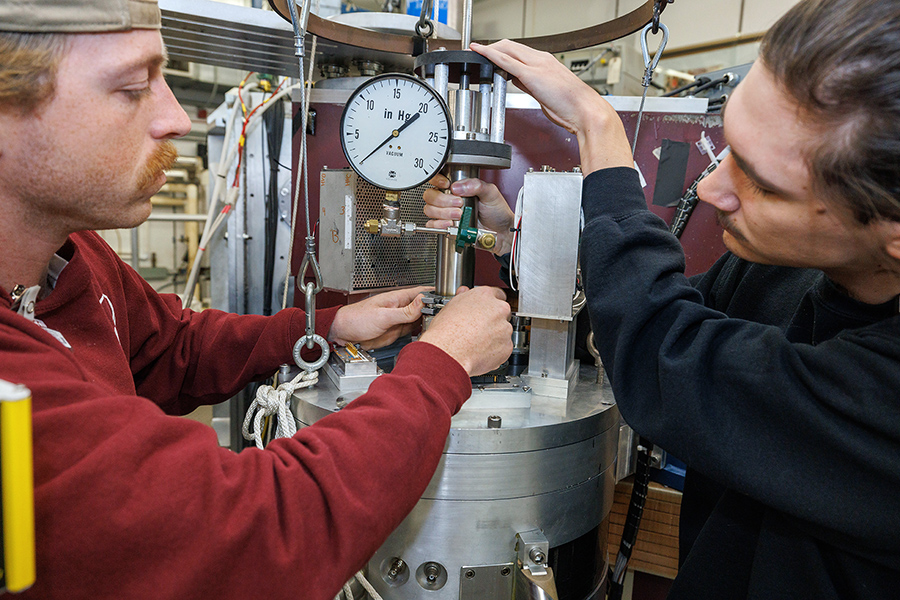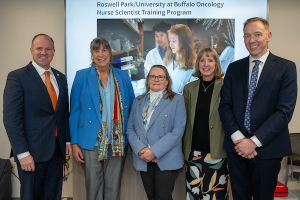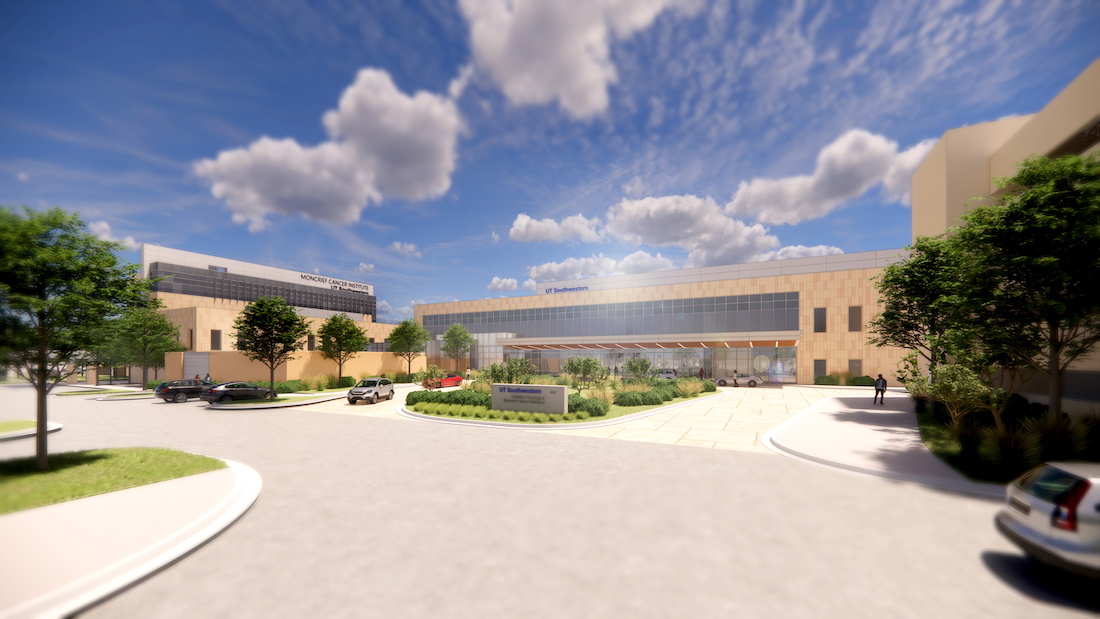Scientists from DOE’s Pacific Northwest National Laboratory, DOE’s Sandia National Laboratories, and the Georgia Institute of Technology will collaborate on solutions to some of the most challenging problems in AI today, thanks to $5.5 million in funding from DOE.
The new co-design center, known as the Center for ARtificial Intelligence-focused ARchitectures and Algorithms (ARIAA), funded by DOE’s Office of Science, will promote collaboration between scientists at the three organizations as they develop core technologies important for the application of AI to DOE mission priorities, such as cybersecurity and electric grid resilience.
Today’s announcement reinforces DOE’s commitment to accelerating the research, development, delivery, and adoption of AI and complements an earlier announcement by Secretary of Energy Rick Perry. He had announced the establishment of the DOE Artificial Intelligence and Technology Office (AITO) to coordinate the AI work being done across the DOE enterprise. The development is in line with President Trump’s call for a national strategy to assure AI technologies are developed to positively impact the lives of the American public.
PNNL senior research scientist Roberto Gioiosa will be the center’s director and will lead the overall vision, strategy, and research direction. Siva Rajamanickam from Sandia and Professor Tushar Krishna from Georgia Tech will serve as deputy directors.
“Artificial intelligence is revolutionizing our world,” said Gioiosa. “You can see this everywhere from your mobile phone to the development of self-driving cars. AI is also revolutionizing the way we do science and the way we tackle problems important to our nation. The creation of ARIAA is part of the strategy for solving some of the most challenging problems by employing novel artificial intelligence and machine learning techniques.”
One of the biggest difficulties facing researchers today is a problem of their own making: How to best design future supercomputers so that they can help DOE solve the nation’s most challenging problems in science, engineering, health, and energy. ARIAA is centered around a concept known as “co-design,” which alludes to the need for researchers to weigh and balance the capabilities of hardware and software – how to corral the vastly different types of architectures and algorithms possible to best solve the problems at hand. What types of applications will run best on a given hardware set-up, and conversely, what types of hardware need to be created to best serve newly created software? It’s a balance that Gioiosa knows well: He was part of the team that 15 years ago built IBM Blue Gene, a powerful and efficient supercomputer whose heart is co-design.
While co-design requires a balance that computer scientists have faced for decades, the surging discipline of AI demands newly focused attention.
The center will explore how AI and machine learning can support four areas that touch virtually everyone: the power grid, cybersecurity, graph analytics, and computational chemistry. Those disciplines touch upon how new medicines are created, how to keep one’s online identity safe, how to analyze masses of information, and how to keep the electric grid humming despite multiple challenges.
A focus of the center is to develop algorithms and architectures that can be used and applied in a variety of different systems, both today’s as well as systems to be created in the future.
Each institution brings to the collaboration a unique strength:
- PNNL has expertise in power grid simulation, chemistry, and cybersecurity, and robust research in computer architecture and programming models, as well as computing resources, including systems for testing emerging architectures.
- Sandia has expertise in software simulation of computer systems, machine learning algorithms, graph analytics, and sparse linear algebra, and will provide access to computer facilities and testbed systems to support early access to emerging computing architectures for code development and testing.
- Georgia Tech has expertise with modeling and developing custom accelerators for machine learning and sparse linear algebra and will provide access to its advanced computing resources.
“AI promises to yield answers to many problems in a fraction of the time compared to current processes,” said Gioiosa. “But more importantly, AI will allow us to solve problems that today simply cannot be solved because they are too complex. This is the science of the future.”
About PNNL
Pacific Northwest National Laboratory draws on signature capabilities in chemistry, earth sciences, and data analytics to advance scientific discovery and create solutions to the nation’s toughest challenges in energy resiliency and national security. Founded in 1965, PNNL is operated by Battelle for the U.S. Department of Energy’s Office of Science. DOE’s Office of Science is the single largest supporter of basic research in the physical sciences in the United States and is working to address some of the most pressing challenges of our time. For more information, visit PNNL’s News Center. Follow us on Facebook,Instagram, LinkedIn and Twitter.
Original post https://alertarticles.info




